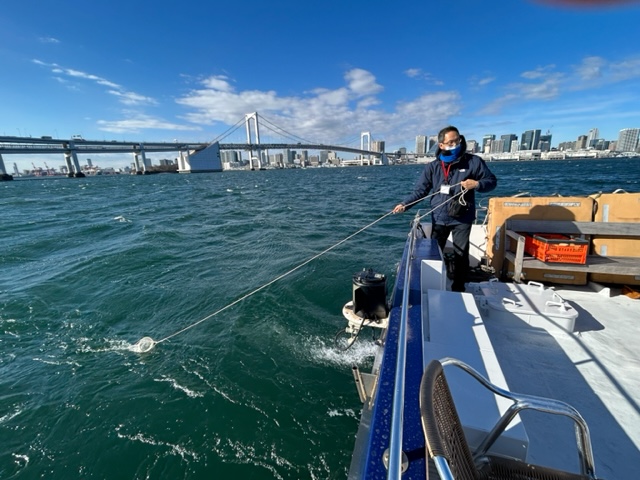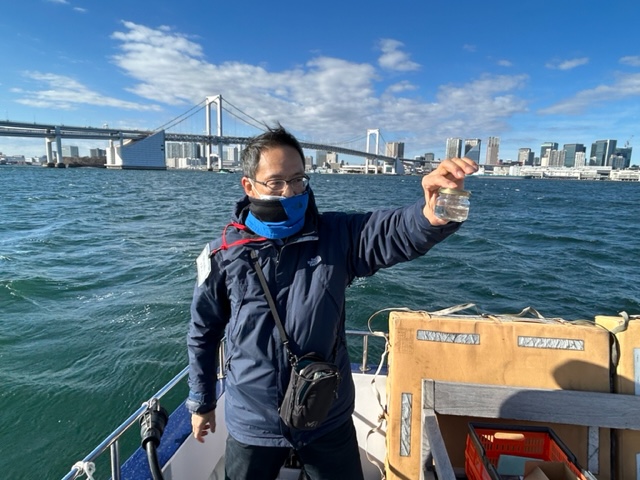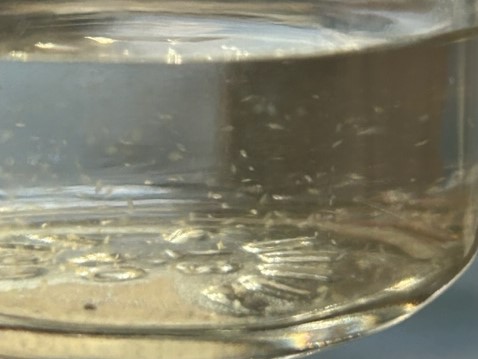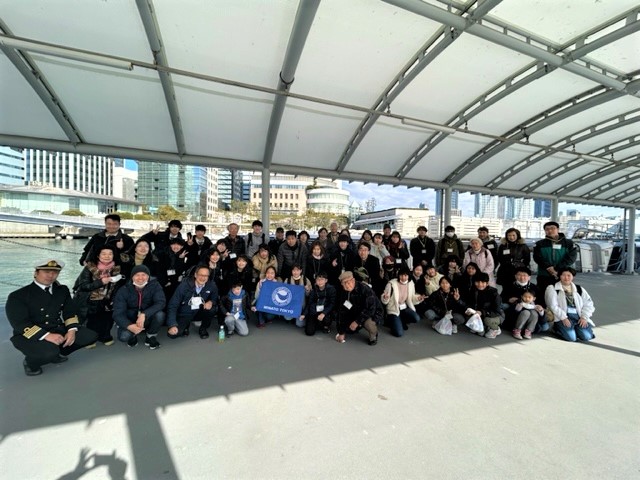Learn about forests, rivers and sea of Tokyo
Exploration of Tokyo by Cruise Boat and Bus
Learn about forests, rivers and sea of Tokyo
Date: January 21, 2023
Time: 9:30 am ~ 5:00 pm
Minato UNESCO Association, co-sponsored by the Minato City Board of Education and Tokyo University of Marine Science and Technology (TUMSAT) Hydrosphere Environmental Education Laboratory, carried out the event “Learn about the forests, rivers and sea of Tokyo.” This time, which was the 4th time, about 60 people, including elementary, junior high and high school students, working adults, and students of Tokyo University of Marine Science and Technology, participated from among many applicants. In the morning, we cruised the canals of Tokyo Bay and the Sumida River, and in the afternoon, we toured Hayama Intake Weir and Lake Sayama by bus, pondering about the forests, rivers, and sea of Tokyo and their connections.



The boat departed from Hinode Pier at 9:30 a.m., although it was a little windy, and sailed around Tsukiji from Oi Wharf, Daiba, Shinonome Canal, Toyosu Canal, and Sumida River before returning to Hinode Pier. On board, students from TUMSAT made presentations, and participants were divided into groups and had group discussions with the students who participated as moderators.


We also carried out bird watching on board and plankton sampling in Tokyo Bay. “Why was the Rainbow Bridge so expensive?” “Why was Daiba created?” “Why was Toyosu chosen as the relocation site for Tsukiji Market?” “Why were there so many schools in Tsukiji?” Questions about the sea and its history were posed, and a lively discussion was held about the relationship between the sea and people.

In the afternoon, we took a bus from Furukawa Bridge in Minato City to Hamura Intake Weir. After watching the Intake Weir from the bus, we took a walk around Lake Sayama. The Hamura Intake Weir was completed in 1653, same time as the Tamagawa Aqueduct, against the backdrop of population growth during the Edo period, supporting the lives of people in Tokyo.
Along the way, quizzes related to the Tamagawa Aqueduct, such as “Where did they first try to build the water intake?”, “Why did it fail?”, “Construction costs”, and “The height difference in the 100-meter distance of the Tamagawa Aqueduct” were displayed. Then, there was an explanation of topography, life, and history related to the forests, rivers, and sea of Tokyo. At last, Professor SASAKI gave a detailed explanation of what we can do to reduce the burden on the sea, as people’s lives have a great impact on the sea.
A day of traveling from end to end of the Musashino Plateau, following the flow of water. For the event participants, it was an opportunity to feel closer to the sea and nature, and to look at the City of Tokyo from a new perspective. I would like to express my deepest gratitude to Professor SASAKI and everyone involved in TUMSAT for their cooperation.
(Written by YOKOI A., Chairperson of Youth Committee, and translated by SUDA Y., the PR, Bulletin & Internet Committee Associate)
